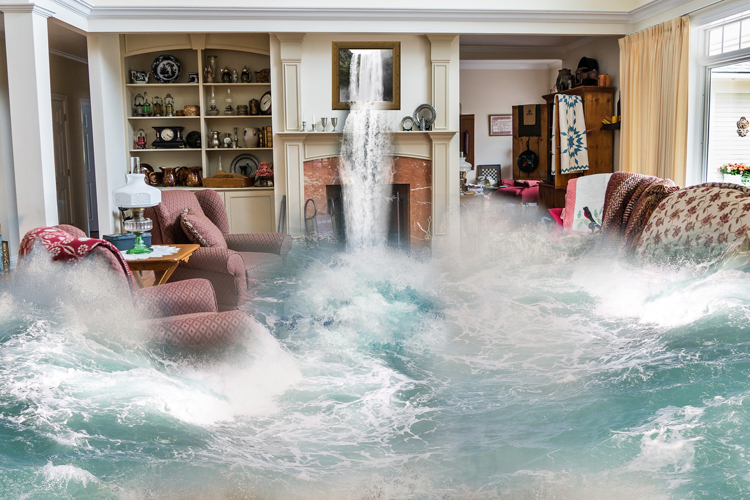Do's & Don'ts of Water Damage.
Do's & Don'ts of Water Damage.
Blog Article
We've uncovered this article about What You Can Do At Home To Prevent Fire And Water Damage listed below on the web and believe it made good sense to share it with you here.

Water offers life, yet water invasion on some parts where it's not expected to be can result in damages and also aggravation. In enhancement, houses with water damage scent stuffy as well as old.
Water can come from many sources like typhoons, floodings, ruptured pipes, leakages, as well as sewer problems. It's much better to have a working expertise of security precautions if you have water damages. Below are a few standards on exactly how to deal with water damages.
Do Prioritize Home Insurance Policy Protection
Seasonal water damages can come from floodings, seasonal rainfalls, and wind. There is additionally an occurrence of an abrupt flood, whether it originated from a defective pipeline that all of a sudden breaks into your house. To shield your house, obtain home insurance coverage that covers both acts of God such as all-natural catastrophes, and emergency situations like broken plumbing.
Do Not Forget to Shut Off Energies
When disaster strikes as well as you remain in a flood-prone area, turn off the primary electric circuit. Shutting off the power protects against
When water comes in as water serves as a conductor, electric shocks. Do not neglect to turn off the main water line valve as a way to prevent more damage.
Maintain your furniture secure as they can move around and create added damages if the floodwaters are getting high.
Do Remain Proactive and Heed Weather Condition Alerts
If you live in a location afflicted by floods, stay prepared and aggressive at all times. Pay attention to the information and evacuation warnings if you live near a body of water like a creek, lake, or river .
Don't Overlook the Roofing System
Your roofer should take care of the malfunctioning seamless gutters or any kind of various other indicators of damages or weakening. An inspection will prevent water from streaming down your walls and saturating your ceiling.
Do Take Note Of Small Leaks
There are red flags that can attract your interest as well as indicate to you some weakened pipelines in your house. Indications of red flags in your pipes include bubbling paint, peeling wallpaper, water streaks, water stains, or dripping audios behind the walls. Repair work and check your plumbing fixed prior to it results in enormous damages to your house, funds, and also an individual problem.
Don't Panic in Case of a Ruptured Pipe
Keeping your presence of mind is crucial in a time of crisis. Because it will stifle you from acting fast, panicking will only compound the issue. Panic will also offer you added stress and anxiety. When it comes to water damage, timing is key. The longer you wait, the more damages you can anticipate as well as the worst the outcomes can be. If a pipeline bursts in your house, quickly shut off your main water shutoff to cut off the resource and also protect against even more damage. Unplug all electric outlets in the area or turn off the breaker for that part of the house. Ultimately, call a credible water damage reconstruction expert for aid.
Water gives life, yet water breach on some parts where it's not intended to be can result in damage and also hassle. In addition, houses with water damage scent old and also moldy.
Seasonal water damage can come from floodings, seasonal rainfalls, and wind. Indications of red flags in your pipelines include bubbling paint, peeling wallpaper, water streaks, water discolorations, or dripping noises behind the wall surfaces. If a pipeline ruptureds in your home, right away closed off your primary water shutoff to reduce off the source as well as avoid even more damages.
Some Do's & Don't When Dealing with a Water Damage
DO:
Make sure the water source has been eliminated. Contact a plumber if needed. Turn off circuit breakers supplying electricity to wet areas and unplug any electronics that are on wet carpet or surfaces Remove small furniture items Remove as much excess water as possible by mopping or blotting; Use WHITE towels to blot wet carpeting Wipe water from wooden furniture after removing anything on it Remove and prop up wet upholstery cushions for even drying (check for any bleeding) Pin up curtains or furniture skirts if needed Place aluminum foil, saucers or wood blocks between furniture legs and wet carpet Turn on air conditioning for maximum drying in winter and open windows in the summer Open any drawers and cabinets affected for complete drying but do not force them open Remove any valuable art objects or paintings to a safe, dry place Open any suitcases or luggage that may have been affected to dry, preferably in sunlight Hang any fur or leather goods to dry at room temperature Punch small holes in sagging ceilings to relieve trapped water (don't forget to place pans beneath!); however, if the ceiling is sagging extremely low, stay out of the room and we'll take care of it DO NOT:
Leave wet fabrics in place; dry them as soon as possible Leave books, magazines or any other colored items on wet carpets or floor Use your household vacuum to remove water Use TV's or other electronics/appliances while standing on wet carpets or floors; especially not on wet concrete floors Turn on ceiling fixtures if the ceiling is wet Turn your heat up, unless instructed otherwise

I was shown that editorial on 5 Home Safety Tips To Reduce The Risk Of Fire And Water Damage through a friend on our other web property. In case you enjoyed our blog entry kindly be sure to pass it around. Bless you for your time. Come back soon.
Report this page